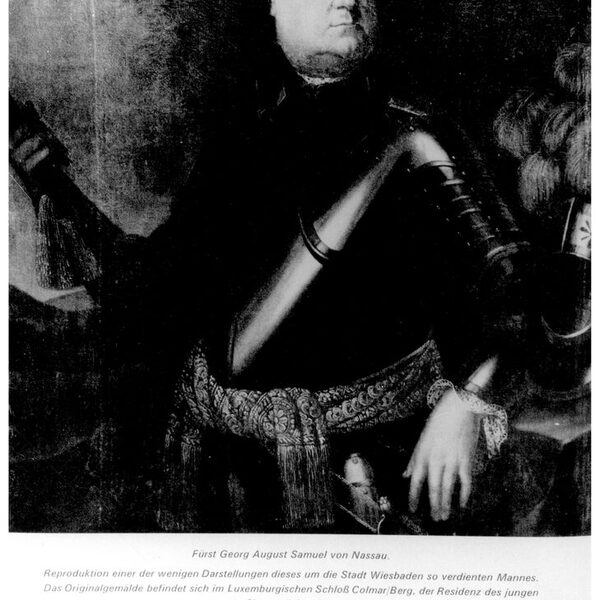Georg August Samuel Prince of Nassau-Idstein
Georg August Samuel Prince of Nassau-Idstein
born: 26.02.1665 in Idstein
died: 26.10.1721 in Biebrich
Georg was the only surviving son of Count Johannes and Anna von Leiningen-Dachsburg. In 1688 he married Henriette Dorothea von Oettingen. After the death of his father in 1677, he was under the guardianship of the Counts of Solms and Nassau-Usingen, among others. The cavalier's journey took him to Giessen University in 1678, then via Strasbourg to Paris, England and the Netherlands. The arbitrary regiment of the guardianship regents forced him to return in 1682. In 1688 he was elevated to the rank of Prince of the Empire, but without a seat or vote in the Imperial Diet. George's participation in the Turkish wars and the war of 1692/93, the initially planned relocation of his residence to Wiesbaden and the commencement of the construction of Biebrich Palace in 1701, as well as the compensation of his relatives, against whom he took legal action to share the costs of raising his rank, could not be financed from his previous state income.
To increase revenue, he focused on expanding the tax system with a variety of new types of tax. At the same time, he promoted the expansion of the domain economy, had numerous mills built near Wiesbaden and Wehen, promoted the expansion of iron smelters and hammer mills and established new farms (Georgenthal in 1692), founded the village of Georgenborn in 1694 and set up manufactories, including for the production of mirror glass. In line with mercantilist economic policy and due to its proximity to the new summer residence in Biebrich, Wiesbaden received extensive support. With an intensive immigration policy and numerous ordinances, Georg attempted to promote the spa industry, stimulate trade and commerce in the city and at the same time secure supplies for the residence. Urban development measures such as the construction of new streets, the partial renovation of the town wall, the modernization of the town palace, the renovation of the Mauritius Church and the expansion of the spa district led to a profound change in the town's hitherto medieval appearance. He was buried in Idstein.
Literature
Bleymehl-Eiler, Martina: Stadt und frühneuzeitlicher Fürstenstaat: Wiesbadens Weg von der Amtsstadt zur Hauptstadt des Fürstentums Nassau-Usingen (Mitte des 16. bis Ende des 18. Jahrhunderts), 2 vols, uned. diss., Mainz 1998.
